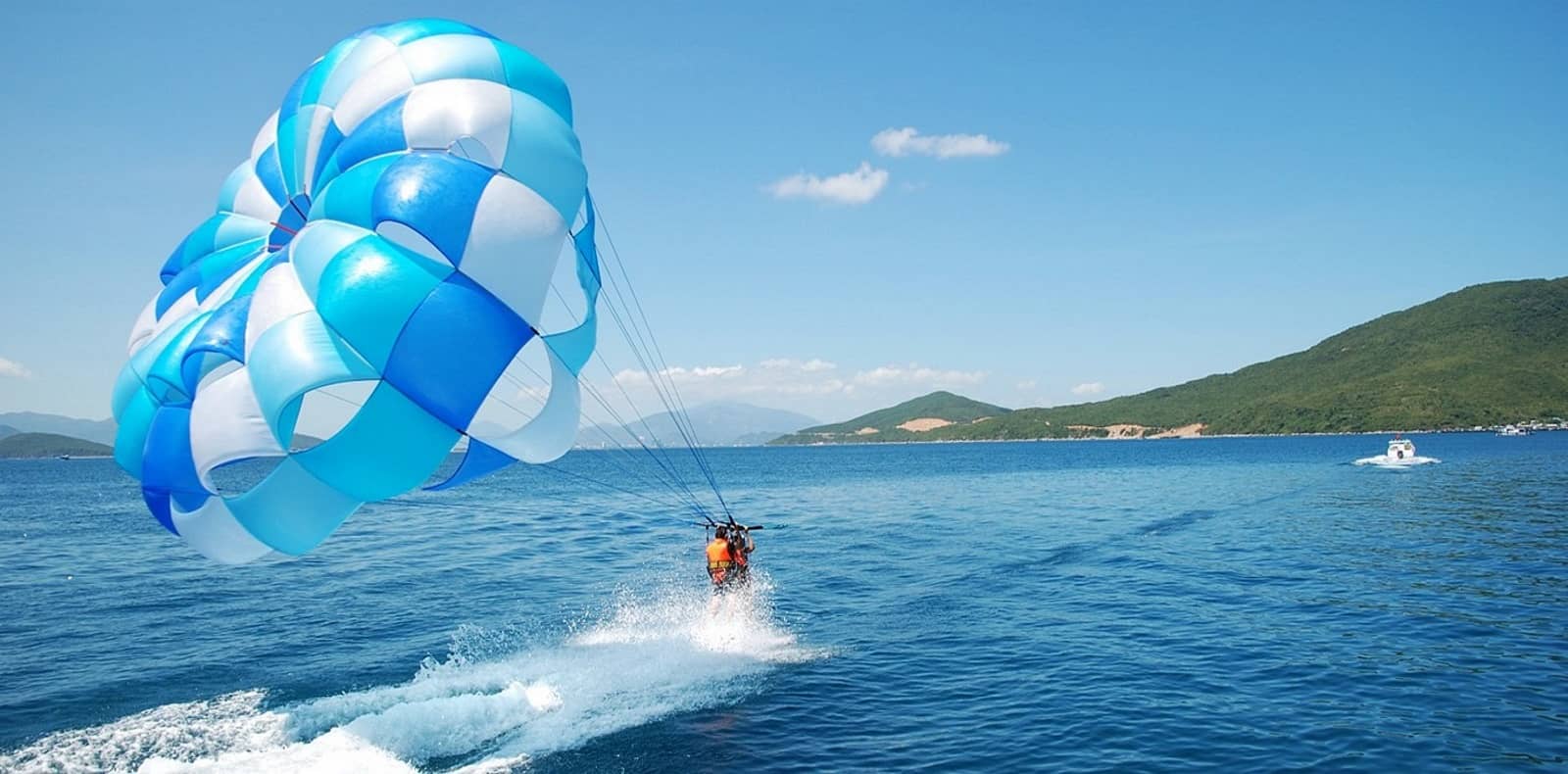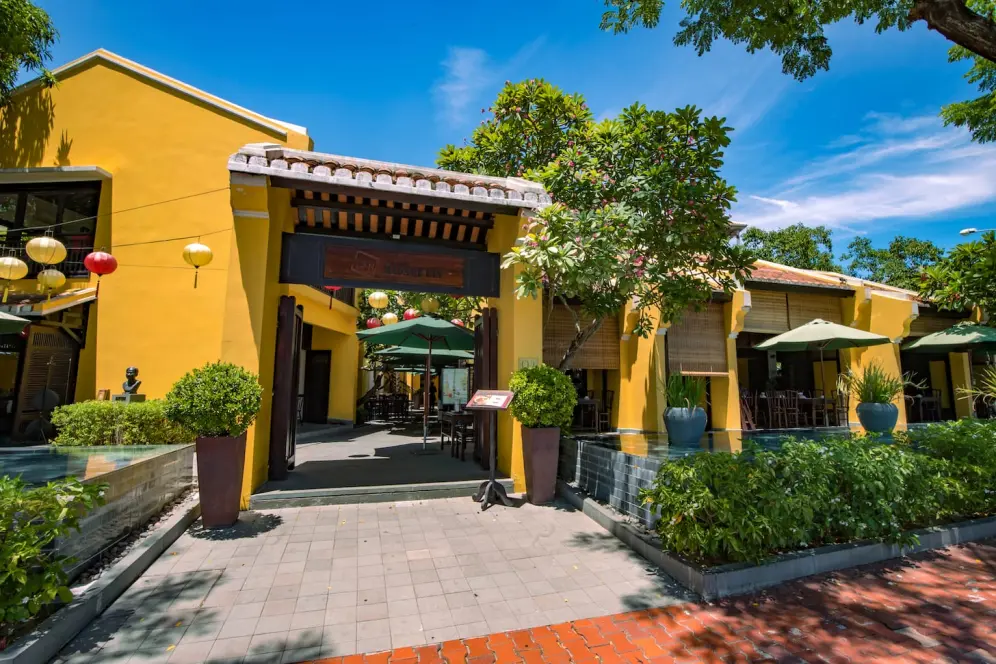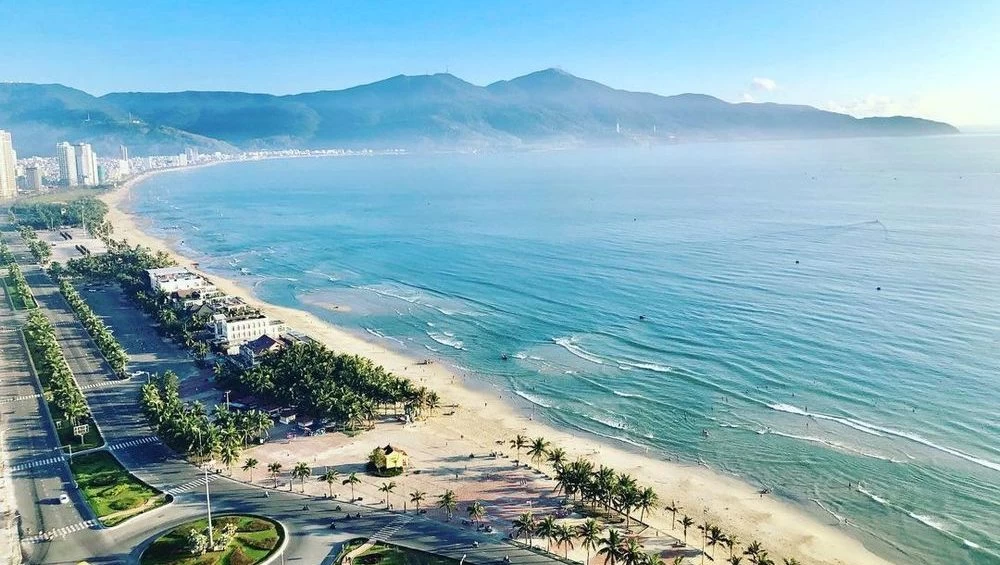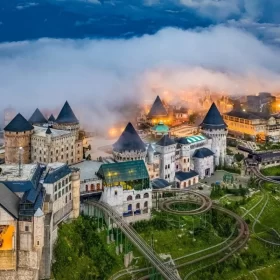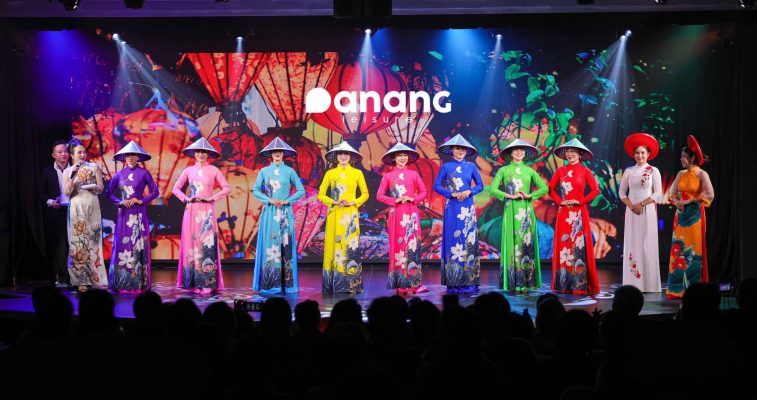
Let’s explore Da Nang culture
Experience the best of Da Nang culture: festivals, traditional crafts, and more. Plan your cultural journey in Vietnam’s coastal gem today with Ula Travel!
I. Overview of Da Nang
1. A Brief Introduction to Da Nang
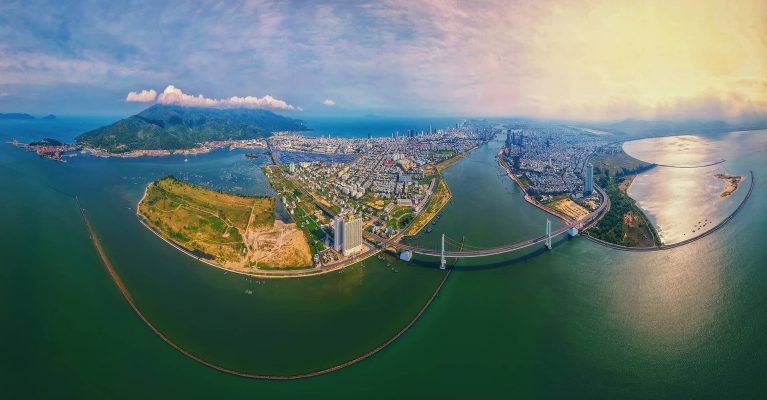
You definitely have to set foot in Danang once
Da Nang, located on the central coast of Vietnam, is a vibrant and rapidly developing city known for its stunning beaches, rich history, and warm hospitality. With a population of over a million people, it is the fifth-largest city in Vietnam and serves as a key economic and cultural hub in the region. The city is situated between the Hoi An ancient town and the imperial city of Hue, making it an ideal base for exploring the cultural heritage of central Vietnam.
2. Significance as a Travel Destination in Vietnam
Da Nang has gained international recognition as one of Vietnam’s most appealing travel destinations. Its pristine beaches, such as My Khe Beach and Non Nuoc Beach, attract sun-seekers and water sports enthusiasts from around the world.
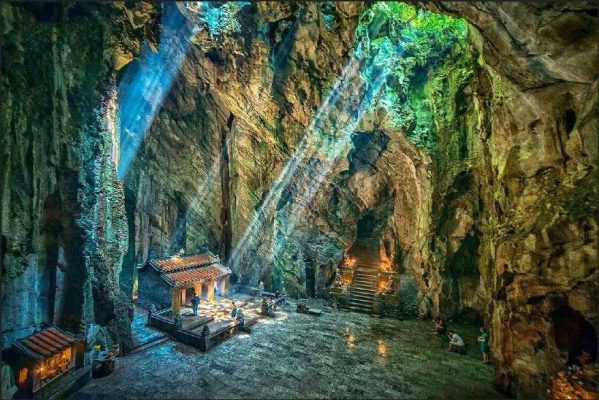
Marble Mountains
The city is also home to a number of unique landmarks, including the Marble Mountains, a cluster of five marble and limestone hills, and the Dragon Bridge, a modern architectural marvel that breathes fire on weekends.
Additionally, Da Nang’s close proximity to the UNESCO World Heritage Sites of Hoi An and My Son Sanctuary further enhances its allure, offering travelers a perfect blend of natural beauty and cultural richness.
Are you looking for: Da Nang tours
3. Why Understanding the Local Culture Enhances the Travel Experience
Understanding and appreciating the local culture is a crucial aspect of any travel experience. It allows visitors to gain a deeper insight into the daily lives, traditions, and values of the people in the destination they are exploring. In Da Nang, immersing oneself in the local culture can significantly enrich the travel experience in several ways:
- Authentic Connections: Engaging with the local culture helps travelers forge authentic connections with the residents of Da Nang. This can lead to meaningful interactions and a more genuine understanding of their way of life, creating lasting memories beyond the typical tourist attractions.
- Enhanced Appreciation of Attractions: Knowledge of Da Nang’s cultural background provides context and depth to the various historical sites and landmarks. For instance, visiting the Cham Museum becomes more enriching when one understands the significance of Cham culture and its historical impact on the region.
- Cultural Sensitivity: Awareness of local customs and traditions fosters cultural sensitivity and respect. This not only enhances the travel experience by avoiding unintentional disrespect but also promotes positive interactions with the local community, making travelers feel more welcomed and appreciated.
- Unique Experiences: Exploring local festivals, traditional crafts, and culinary delights offers unique experiences that are often missed by those who do not take the time to delve into the culture. Participating in events like the Da Nang International Fireworks Festival or trying local dishes such as Mi Quang provides a deeper, more immersive experience.
II. Historical Background of Da Nang
1. Early Civilizations and Cham Culture
Da Nang’s history is deeply rooted in ancient civilizations, with evidence of early human settlement dating back thousands of years. Among the most significant early inhabitants were the Cham people, who established a powerful and sophisticated culture in Central Vietnam.
The Cham civilization, which thrived from the 2nd century to the 17th century, was known for its remarkable achievements in art, architecture, and maritime trade. The Cham people were heavily influenced by Hinduism, which is reflected in their intricate temple architecture and sculptures dedicated to Hindu deities such as Shiva and Vishnu.
Do not miss: Da Nang to Hue – Unexpected Trip You’ll Love
2. Historical Landmarks – My Son Sanctuary
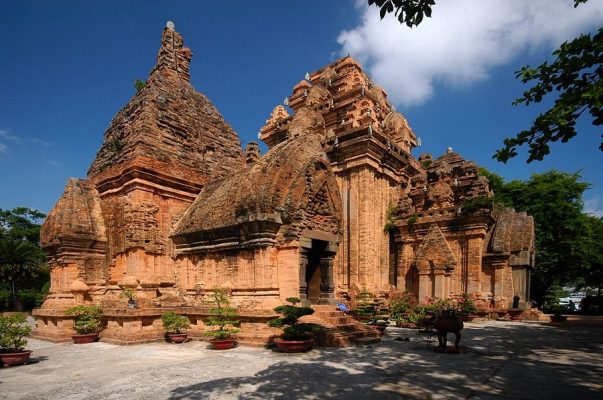
My Son Sanctuary represents the unique culture of the Cham people
One of the most notable remnants of the Cham civilization is the My Son Sanctuary, located about 70 kilometers southwest of Da Nang. My Son was a religious center and a royal burial ground, consisting of a series of impressive temple complexes constructed between the 4th and 14th centuries.
The sanctuary was designated a UNESCO World Heritage Site in 1999 due to its historical and cultural significance. It is often compared to other major Southeast Asian temple complexes, such as Angkor Wat in Cambodia and Borobudur in Indonesia. Visitors to My Son can explore the beautifully preserved red brick towers and temples, which showcase the Cham’s architectural ingenuity and their devotion to Hinduism.
III. Traditional Culture of Da Nang
1. Festivals and celebrations
Tet Festival (Lunar New Year)
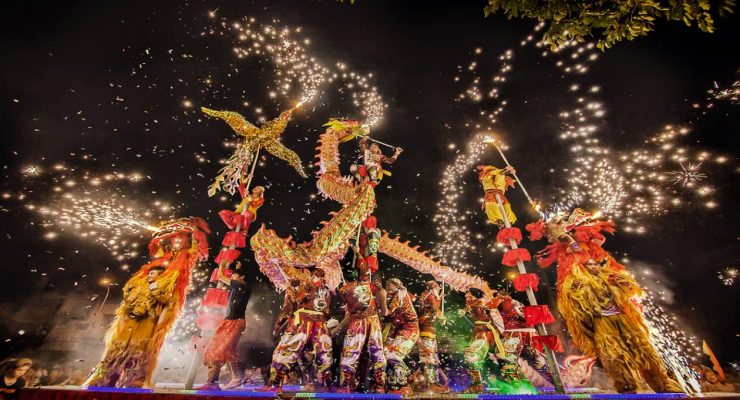
Da Nang people welcome the new year
Tet, or Lunar New Year, is the most significant festival in Vietnam, and Da Nang is no exception. Celebrated in late January or early February, Tet marks the arrival of spring and is a time for family reunions, paying respects to ancestors, and ushering in a prosperous new year.
During Tet, Da Nang comes alive with vibrant decorations, including red lanterns, peach blossoms, and kumquat trees, symbolizing good fortune and happiness. The city hosts various cultural activities, such as traditional music performances, lion dances, and fireworks displays. Visitors can experience the festive atmosphere by visiting temples, participating in traditional games, and joining in the local customs and rituals.
Start your journey with: Da Nang to Hoi An in 4 Days
Da Nang International Fireworks Festival
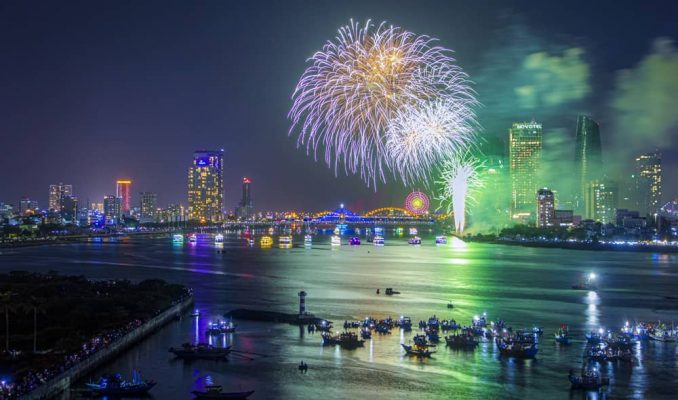
Da Nang International Fireworks Festival
Held annually from April to June, the Da Nang International Fireworks Festival is a major event that attracts participants and spectators from around the world. This month-long festival features spectacular fireworks displays from teams representing different countries, each showcasing their unique pyrotechnic artistry against the stunning backdrop of the Han River.
The festival includes various cultural performances, parades, and culinary events, providing a comprehensive cultural experience. Visitors can enjoy live music, traditional dance shows, and street food festivals that highlight the diverse cuisine of Da Nang. The Da Nang International Fireworks Festival is not just a visual feast but also a celebration of global friendship and cultural exchange.
You will be like: Discover Central Vietnam Tour in 6 Days
2. Local religious festivals
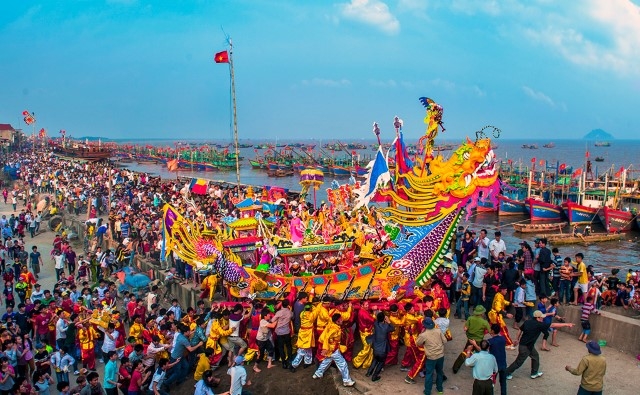
Cau Ngu Festival is a very important festival for coastal people
Da Nang hosts several local religious festivals throughout the year, reflecting the city’s rich spiritual heritage and diverse religious practices.
- Cau Ngu Festival (Whale Worshipping Festival): Celebrated by the coastal fishing communities, this festival pays homage to the Whale God, who is believed to protect fishermen and bring good fortune. The festival involves boat processions, traditional music, and offerings of food and incense.
- Quan The Am Festival: Held at the Marble Mountains, this Buddhist festival honors Quan The Am, the Goddess of Mercy. The festival includes a series of religious rituals, traditional music and dance performances, and a vibrant marketplace. It is an excellent opportunity for visitors to experience the spiritual side of Da Nang and witness the devotion of the local people.
- Dien Hai Citadel Festival: This festival commemorates the historical defense against French colonial forces. It includes reenactments of historical events, cultural performances, and exhibitions, providing insight into Da Nang’s historical resilience and pride.
IV. Traditional Arts and Crafts
1. Non-Nuoc Stone Carving Village
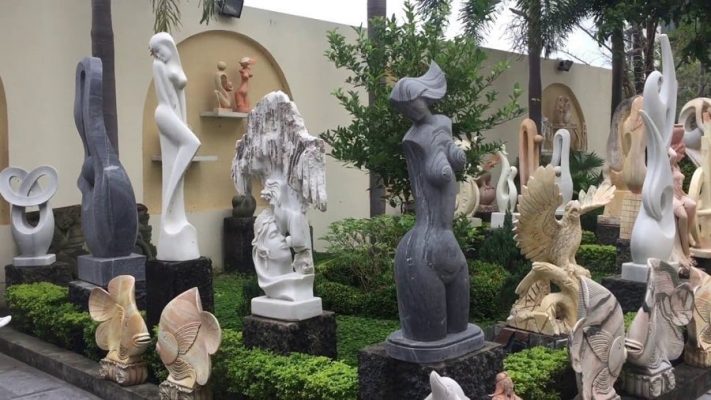
Non-Nuoc Stone Carving Village
Non Nuoc Stone Carving Village, located at the foot of the Marble Mountains, is a renowned traditional craft village in Da Nang. The village has a history spanning over 400 years and is famous for its skilled artisans who create intricate sculptures from marble and stone.
Visitors can watch the artisans at work and purchase a variety of handcrafted items, from small souvenirs to large statues and intricate carvings. The craftsmanship here is highly regarded, and the products are often used for religious and decorative purposes.
More details: Central Vietnam Wonders Tour
2. Traditional Silk Weaving
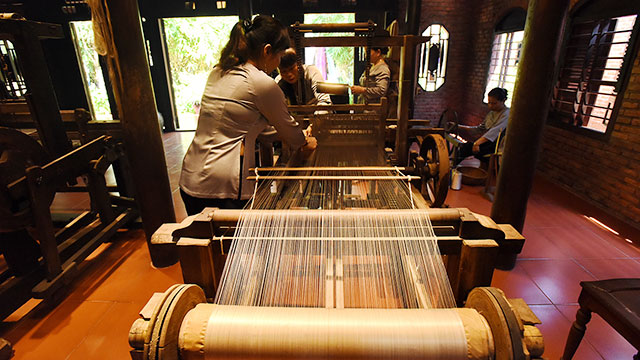
Traditional Silk Weaving in Da Nang
Da Nang also has a rich tradition of silk weaving. Traditional silk weaving is an age-old craft that has been passed down through generations. The silk produced in the region is known for its high quality and is used to make beautiful garments, scarves, and accessories. Visitors can explore local workshops to see the entire process, from spinning the silk threads to weaving them into fabric.
V. Contemporary Cultural Scene in Da Nang
1. Art and music
Modern Art Galleries and Exhibitions
Da Nang has a vibrant and evolving art scene that reflects both its rich cultural heritage and contemporary influences. The city hosts several modern art galleries that showcase the works of both local and international artists.
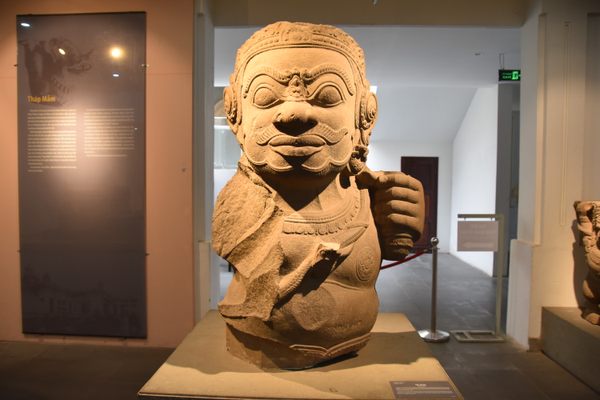
Da Nang Fine Arts Museum
One notable venue is the Da Nang Fine Arts Museum, where visitors can explore a diverse range of art forms, from traditional Vietnamese paintings to modern installations and sculptures. The museum frequently organizes exhibitions that highlight contemporary themes and the innovative approaches of emerging artists.
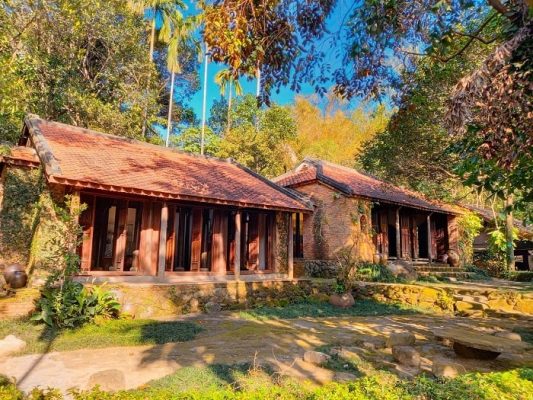
Dong Dinh Art Museum
Other popular art spaces include the Dong Dinh Museum, located on the Son Tra Peninsula, which combines art with nature, offering a unique experience where visitors can enjoy traditional and contemporary art in a lush garden setting. Additionally, smaller independent galleries and art studios around the city contribute to the thriving art community, offering a platform for artists to exhibit their works and engage with art enthusiasts.
Music Scene: Traditional vs. Modern Influences
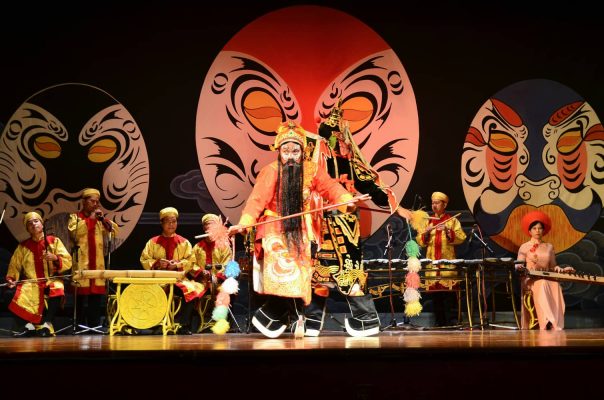
Traditional art performance in Da Nang
Da Nang’s music scene is a dynamic blend of traditional Vietnamese music and modern influences. Traditional music, often featuring instruments such as the dan bau (a one-stringed zither) and the dan tranh (a 16-string zither), can be experienced at cultural festivals and special performances. These traditional sounds are a significant part of the local culture, offering a glimpse into the country’s rich musical heritage.
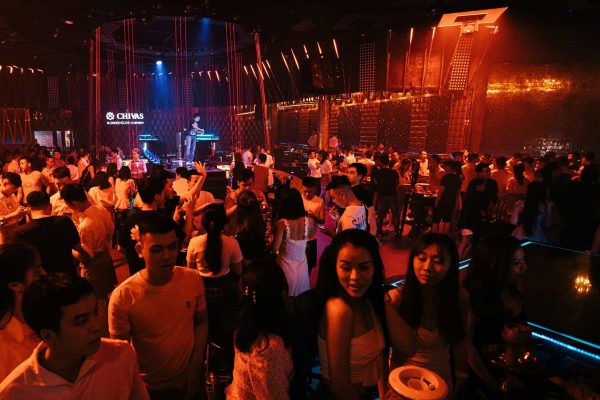
Live music bars in Da Nang
On the other hand, the modern music scene in Da Nang is lively and diverse, catering to various tastes and preferences. Live music bars and cafes across the city feature performances ranging from pop and rock to jazz and electronic music. Additionally, the city hosts music festivals and events that attract both local and international artists, further enriching the cultural landscape.
Click here: Central Vietnam Wonders Tour
2. Cultural Institutions
Museums
- Da Nang Museum of Cham Sculpture: This museum is one of the most significant cultural institutions in Da Nang, dedicated to preserving and showcasing the art and culture of the ancient Champa civilization. Visitors can explore an extensive collection of Cham artifacts, including sandstone sculptures, terracotta figures, and temple decorations, providing deep insights into the historical and artistic heritage of the region.
- Da Nang Fine Arts Museum: Located in the heart of the city, this museum features a vast collection of artworks that span different periods and styles. From traditional Vietnamese art to contemporary pieces, the museum offers a comprehensive look at the artistic evolution of the region. Special exhibitions and interactive displays enhance the visitor experience, making it a must-visit for art lovers.
Performance Venues: Theaters and Live Music Bars
Da Nang boasts a variety of performance venues that cater to different cultural tastes and preferences. The city’s theaters, such as the Trung Vuong Theater, host a range of performances, including traditional Vietnamese opera (hat tuong), contemporary plays, and dance shows. These venues provide a platform for both local and national artists to showcase their talents.
Live music bars are an integral part of Da Nang’s nightlife, offering visitors a chance to enjoy a wide array of musical genres. Whether you’re in the mood for a relaxing evening with acoustic tunes or an energetic night with rock bands, Da Nang’s live music bars have something for everyone.
VI. Experiencing Da Nang Culture
1. Experiencing Local Life Through Markets
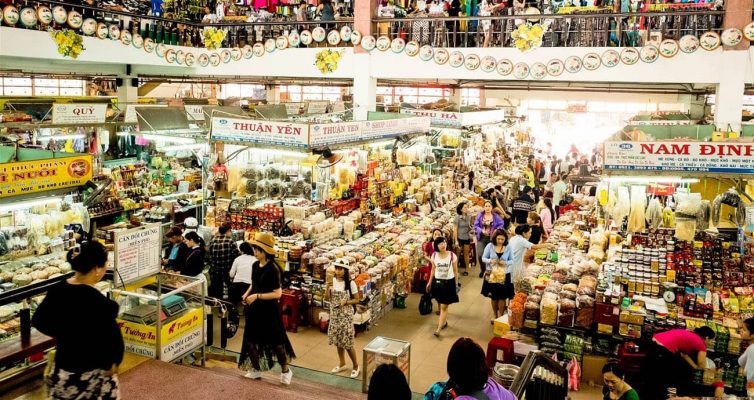
Explore the most famous Han market in Da Nang
Visiting local markets is one of the best ways to immerse yourself in the Da Nang culture. Two of the most popular markets are Han Market and Con Market.
- Han Market: Located in the heart of Da Nang, Han Market is a bustling hub where you can find everything from fresh produce to clothing and souvenirs. This market has been around since the French colonial period and retains much of its historical charm. As you wander through the market, you’ll see stalls brimming with vibrant fruits, fresh seafood, and a wide array of spices. It’s a great place to try local snacks and street food. Don’t forget to haggle with the friendly vendors—it’s part of the experience!
- Con Market: Another must-visit is Con Market, the largest wholesale and retail market in Da Nang. Here, you can get a true sense of local life. The market is divided into sections, each specializing in different goods such as dried foods, household items, and clothing. One of the highlights is the food court area, where you can sample delicious local dishes like Mi Quang (turmeric noodles with shrimp and pork) and Bun Thit Nuong (grilled pork with vermicelli). The vibrant atmosphere and the variety of goods on offer make Con Market a fascinating place to explore.
2. Souvenirs and local products
When it comes to souvenirs, Da Nang offers a variety of unique items that reflect its rich culture and traditions. Here are some popular choices:
- Non-Nuoc Stone Carvings: These intricately carved marble items are made in the Non-Nuoc Village at the foot of the Marble Mountains. They range from small figurines to large sculptures.
- Silk Lanterns: Beautifully handcrafted silk lanterns are a symbol of the nearby Hoi An and can add a touch of Vietnamese elegance to your home.
- Local Delicacies: Consider bringing home some local specialties like dried squid, fish sauce, or the famous Da Nang chili paste. These make great gifts and give a taste of Da Nang to your friends and family.
VIII. Practical Tips for Cultural Etiquette
Understanding and respecting local customs is essential when traveling to Da Nang. Here are some practical tips to help you navigate cultural etiquette smoothly:
1. Do’s and Don’ts
Do’s:
- Greet with a Smile: Vietnamese people value friendliness, and a warm smile goes a long way in making a good impression.
- Use Both Hands When Giving or Receiving: When handing over something, especially money or gifts, use both hands as a sign of respect.
- Dress Modestly: In religious sites like temples and pagodas, ensure you are dressed conservatively. Shoulders and knees should be covered.
- Remove Shoes: Always remove your shoes before entering someone’s home or a religious site.
- Respect Elders: Show respect to older people by letting them go first and addressing them with appropriate titles.
Don’ts:
- Avoid Public Displays of Affection: Holding hands is generally acceptable, but more intimate gestures should be avoided in public.
- Don’t Touch People’s Heads: The head is considered sacred in Vietnamese culture, so avoid touching anyone’s head, including children.
- Don’t Point with Your Finger: Pointing can be considered rude; instead, use your whole hand to gesture.
- Avoid Loud and Boisterous Behavior: Maintain a calm and respectful demeanor, especially in sacred or quiet places.
In summary, Da Nang culture offers a unique blend of ancient traditions and modern vibrancy, making it a fascinating destination for travelers. From its rich historical background and traditional festivals to its contemporary art scene and bustling local markets, Da Nang provides a cultural experience that is both enriching and memorable. Plan your trip today and embark on an unforgettable adventure to experience the rich cultural tapestry of Da Nang.
See more: Da Nang travel tips




